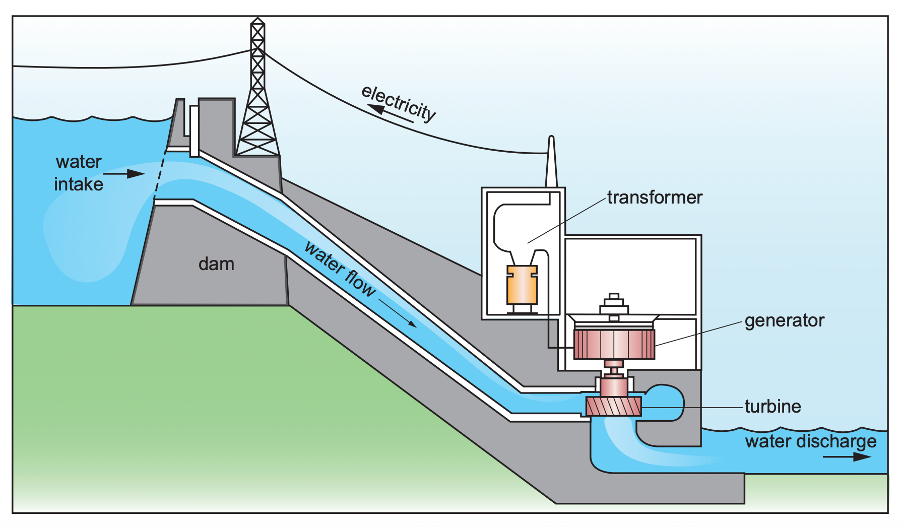Electricity has become commonplace in our world and powers almost everything we do. But how we generate it is changing. As an IGCSE and O Level Pakistan Studies student, you should know all about the exciting domain of renewable electricity production.
Is Electricity a Renewable Resource or Not?
Is electricity a renewable resource? Well, it depends.
In brief, renewable resources are those which can be utilized endlessly and don’t “run out”, such as sunlight. Non-renewable resources, like coal, do run out - the Earth only has a limited store of them.
Therefore, if we are producing electricity from coal or natural gas, it is a non-renewable resource, but if we tap into solar or wind energy, then electricity can certainly be a renewable resource.
Can Renewables Replace Fossil Fuels?
Absolutely! Producing electricity from renewable resources is becoming cheaper as technological advancements are made. Once the economic benefits suit investors, renewable electricity production will outpace fossil-fuel-powered plants.
How to Generate Electricity from Natural Resources?
-
Hydel: Uses dam-stored water to turn turbines and generate electricity.
-
Wind: Wind turbines convert wind movement into electricity.
-
Solar: Solar panels transform sunlight directly into electricity.
-
Wave: Harnesses the energy of ocean waves to generate power.
-
Tidal: Uses the rise and fall of tides to power turbines.
-
Biofuels: Organic materials are burned to produce steam, turning turbines.
-
Geothermal: Earth's internal heat produces steam from deep wells to power turbines
Challenges of Renewable Energy Sources
Producing electricity from renewable resources has various advantages but also unique challenges:
-
Hydel power is reliable and can be controlled based on demand, but damming rivers can have harmful impacts on the surrounding ecosystems.
-
Wave energy can harness a large resource (think about the entire coastline of a country), but the technology is expensive and in its early stages.
-
Solar energy has become very cheap and efficient but has the obvious downside of being dependent on sunny weather (not ideal for some geographies).
As you can observe, the deployment of renewable electricity production depends on the geography and climate. For example, Pakistan has immense potential for hydel energy due to abundant rivers but less so for wind energy due to less windy inland regions.
Conclusion
Even though there are obstacles to producing energy from renewable resources, the benefits for the environment and economy are immense.
In Pakistan, there is a shortfall of electricity which could be covered by renewable production. As an added benefit, Pakistan won’t have to depend on oil imports (which have fluctuating prices), and renewable production can also reduce harmful smog in many areas!
Most Common Repeated Questions:
Unlock the secrets to acing your CAIE IGCSE and O Level exams with a sneak peek into the most frequently asked questions that have graced past papers!
- i) Explain how electricity can be generated from solar power. You should develop your answer. (4)
ii) State two disadvantages of using solar power as a method of generating electricity. (2) [Oct/Nov 2023] - Hydel power stations can be found in mountainous areas of Pakistan. Describe how electricity can be generated from hydel power. (4) [May/June 2023]
- i) Explain one advantage and one disadvantage of generating electricity using solar power. You should develop your answer. (4)
ii) Pakistan plans to generate 60 per cent of its power using renewable energy by 2030, yet coal-fired power stations are being rapidly developed. In 2016 there was one coal-fired power station and by 2019 there were nine, providing 15 per cent of Pakistan’s electricity supply. To what extent is it possible for Pakistan to generate more of its power from renewable energy? Give reasons to support your judgement and refer to examples you have studied. You should consider different points of view in your answer. (6) [May/June 2022] - Study Fig. 3.2 (Insert), a diagram showing a hydel power station. Using Fig. 3.2 only,
i) Describe how electricity can be generated using this method. (4)
ii) Explain two benefits of generating electricity using hydel power. You should develop your answer. (4)
- Read the following two views about providing a sufficient and reliable electricity supply for Pakistan, now and in the future:
Which view do you agree with more? Give reasons to support your answer and refer to examples you have studied. You should consider View A and View B in your answer. (6) [May/June 2020]![Which view do you agree with more? Give reasons to support your answer and refer to examples you have studied. You should consider View A and View B in your answer. (6) [May/June 2020]](https://outclasslms.s3.ap-south-1.amazonaws.com/uploads/images/b679eb5b-e068-4918-8fca-bcd4d20b508e.png)
FAQs
Q. Is electricity considered a renewable resource?
Electricity can be renewable or non-renewable, depending on the source used for its generation. If generated from renewable resources like sunlight, wind, or water, it is considered renewable.
Q. Can renewables replace fossil fuels for electricity generation?
Yes, renewables have the potential to replace fossil fuels for electricity generation. As technology advances and becomes more cost-effective, renewable energy sources are increasingly competitive and sustainable.
Q. What are the challenges of renewable energy sources?
While renewable energy sources have advantages, they also face challenges, such as:
-
- Environmental impact (e.g., damming rivers for hydel power).
- Technology costs and development (e.g., wave energy).
- Weather dependence (e.g., solar energy).
- Geographic and climatic limitations (e.g., wind energy in specific regions).



